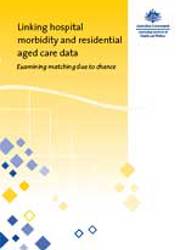The interface between acute hospital care and residential aged care has long been recognised as an important issue in aged care services research. Investigations into the feasibility of linking hospital morbidity and residential aged care data to examine the interface between the two sectors using linkage keys which did not include name, part of name or person identifier were conducted in 2001 and 2002.In the feasibility study, matching was based on date of birth, sex, region of usual residence, and hospital separation and residential aged care entry dates. In the absence of validation against a gold standard linkage, doubts concerning the efficacy of the linkage strategy were raised because of the lack of either name or a common person identifier on the two data sets. This paper employs statistical theory to establish why and under what circumstances the no-name strategy developed in the feasibility study is useful. It investigates the effectiveness of the strategy in a range of linkage situations, and using these results refines the strategy for use in future work.
-
ISBN: 978 1 74024 413 8
-
Cat. no: AGE 40
-
Pages: 52



